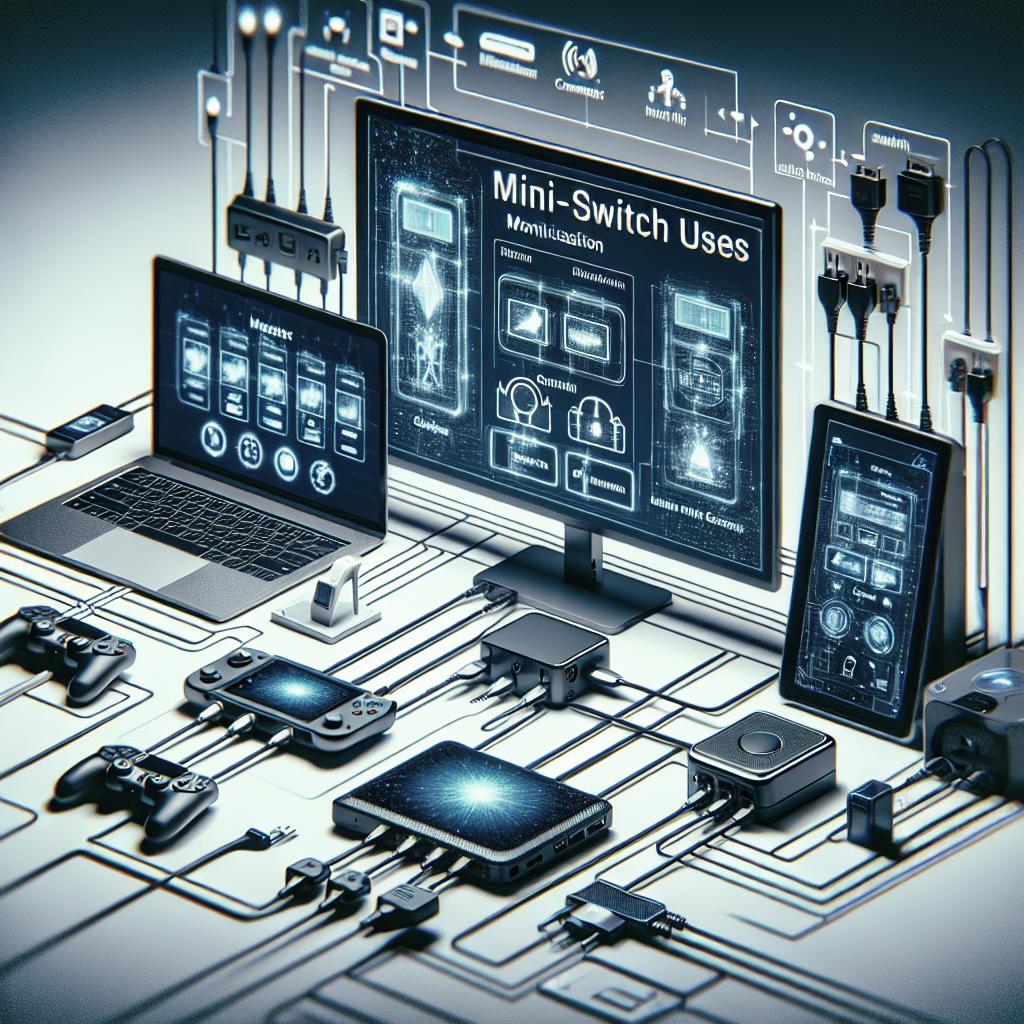Maximizing Mini Switch Uses
In today’s technologically driven world, the demand for compact and efficient electronic components is on the rise. One such indispensable component that has gained traction is the SMD (Surface-Mounted Device) switch, often referred to simply as mini switches. This blog post delves into the intricacies of SMD switches, discussing their workings, types, and benefits. With a focus on maximizing their use, we’ll also explore the essential factors to consider when selecting the right switch for various applications. Whether you’re a hobbyist, an electronics enthusiast, or a professional, understanding these switches will augment your projects and devices, ensuring both functionality and innovation.
What are SMD Switches?
SMD switches are a category of electronic switches that are designed to be mounted directly onto the surface of printed circuit boards (PCBs). Unlike traditional through-hole switches, which require holes to be drilled into the PCB, SMD switches are soldered directly onto the board, creating a low-profile and compact solution. This surface-mount technology (SMT) is increasingly popular in modern electronics, from consumer gadgets to industrial machinery.
These miniaturized switches come in various forms, including push-button, toggle, and slide switches. They are designed to control the flow of electrical current in a circuit, enabling or disabling the electrical connections based on user interaction or automatic triggers. As technology advances, SMD switches continue to shrink in size while growing in functionality, making them crucial components in the miniaturization trend dominating the electronics landscape.
How do SMD Switches work?
The core function of an SMD switch is to control the flow of electricity through a circuit. They achieve this by creating a temporary or permanent electrical connection between two or more contact points. When a user operates the switch, they manipulate these contact points to either close or open the electrical circuit. There are various mechanisms through which SMD switches operate, depending on their type and design.
For instance, push-button SMD switches remain in their default off state until pressed, completing the circuit once pressed and reverting to the off state upon release. Conversely, toggle and slide switches maintain their state until they are manually changed again, offering a permanent switch on or off until further toggling. The ability of SMD switches to offer both momentary and latching operations allows for versatile application across different electronic devices and systems.
Types of SMD Switches
SMD switches come in a variety of types, each suited for specific applications. Push-button switches are among the most common, providing a simple and intuitive way to initiate actions in electronic circuits. These switches can be either momentary, reverting to their original position after being pressed, or maintained, staying in position after the actuation force is removed. Applications range from consumer electronics like remote controls to industrial equipment.
Another popular variant is the toggle switch. Known for their durability and reliability, toggle switches provide a steadfast solution for circuits that require a permanent on/off state. They are commonly used in settings that demand robust control mechanisms, such as in automotive and aerospace industries. Slide switches, on the other hand, are highly favored for their linear movement and compact design, making them ideal for space-constrained applications where precision is crucial.
Benefits
The adoption of SMD switches offers numerous advantages, primarily hinging on their compact size and space efficiency. With their surface-mounted design, these switches facilitate the production of smaller and lighter electronic devices, a significant boon for manufacturers looking to innovate in portable technology markets. Their reduced size, however, does not compromise their performance; instead, they offer robust functionality akin to their larger counterparts.
Moreover, SMD switches support automated assembly processes, which can significantly reduce manufacturing time and costs. Their compatibility with pick-and-place machines ensures high precision during installment, thereby reducing potential human error. The switches’ versatility also adds to their attractiveness — they can be employed in a vast array of electronic applications, from consumer devices like smartphones to advanced medical equipment, showcasing their adaptability and efficiency.
Choosing the Right SMD Switch
Selecting the correct SMD switch is pivotal for ensuring optimal performance and longevity in your electronic projects. Consideration should be given to factors such as the switch’s size, actuation force, electrical ratings, and mounting style. For instance, in applications where space is a constraint, selecting a smaller and thinner switch becomes essential to fit the design specifications without hindering functionality.
Additionally, understanding the environment in which the switch will operate assists in making an informed choice. For instance, switches intended for outdoor or harsh conditions should be robustly built to withstand natural elements. Finally, compatibility with the intended circuit design, especially regarding voltage and current requirements, ensures that the chosen SMD switch will seamlessly integrate into your project, maintaining reliability and efficiency.
Lessons Learned
| Aspect | Summary |
|---|---|
| SMD Switches Definition | Compact, surface-mounted electronic switches used in various applications. |
| Operating Mechanism | Control circuit flow through contact manipulation; types include push-button, toggle, and slide. |
| Switch Types | Push-button for intuitive use, toggle for durability, slide for precision in limited spaces. |
| Benefits | Compact, supports automated assembly, versatile applications. |
| Choosing the Right Switch | Consider size, actuation force, electrical ratings, and environmental factors for optimal performance. |


